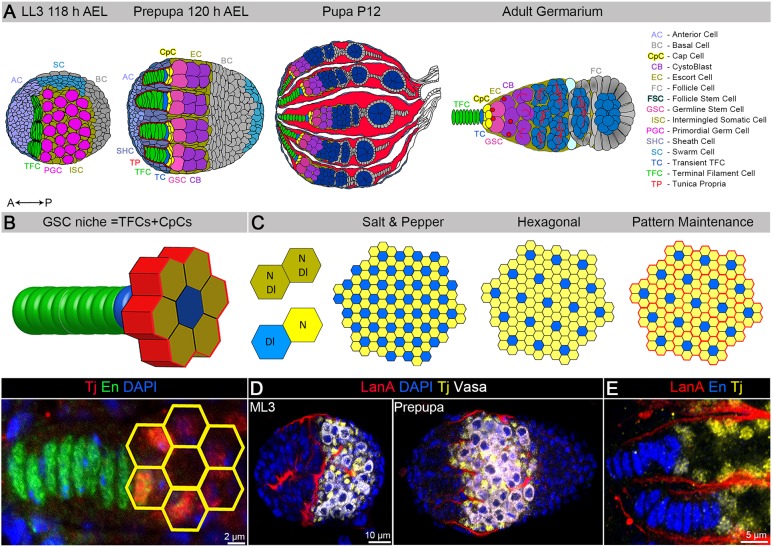Fig. 1.
Patterning of Notch signaling at different stages of ovarian morphogenesis. (A) The developing Drosophila ovary at the late third instar larva (LL3), prepupa, pupa, and adult stages. Different cell types are illustrated by different colors (see the legend on the right). (B) Cartoon of the GSC niche unit, which consists of eight or nine terminal filament cells (TFCs, green; transient TFC, blue) and six cap cells (CpCs, yellow). A, anterior; P, posterior. (C) Schematics of Notch signaling activation in salt-and-pepper and hexagonal patterns, which can be achieved via lateral inhibition or peripheral induction. Undecided cells that co-expresses N and Dl (olive), Notch signal-sending cells (Dl, blue) and Notch signal-receiving cells (N, yellow) are indicated. The hexagonal tessellation requires separation of hexagons to maintain the Notch activity pattern (pattern maintenance). (D,E) The ECM protein LanA (red, LanA::GFP) is present in the tunica propria, which is expressed by SHCs that are separating individual TFs at the prepupal stage. CpCs and ECs are marked by Tj (yellow, D,E), TFCs are marked by En (blue, E), and germline is marked by Vasa (white, D).

